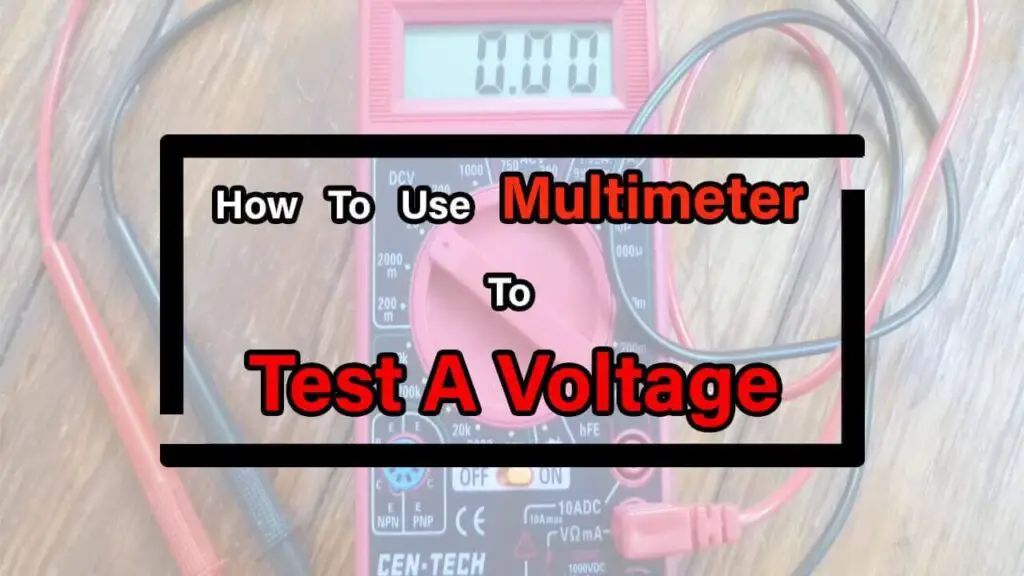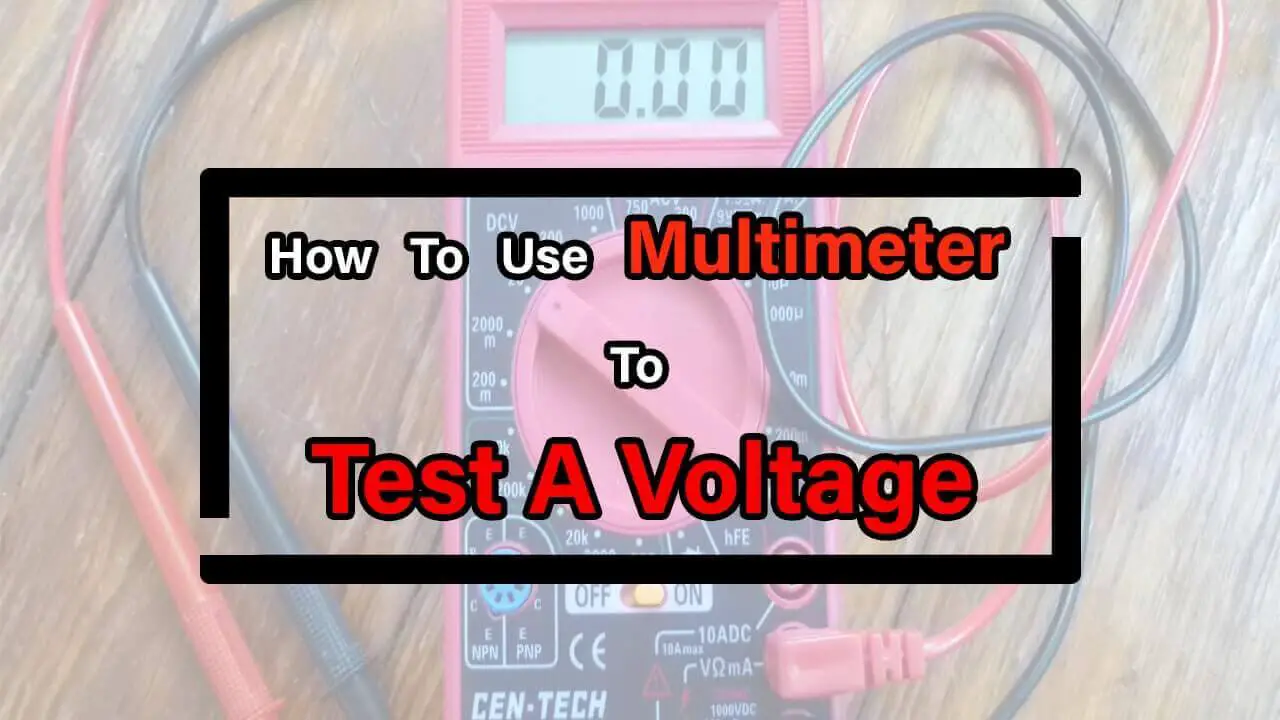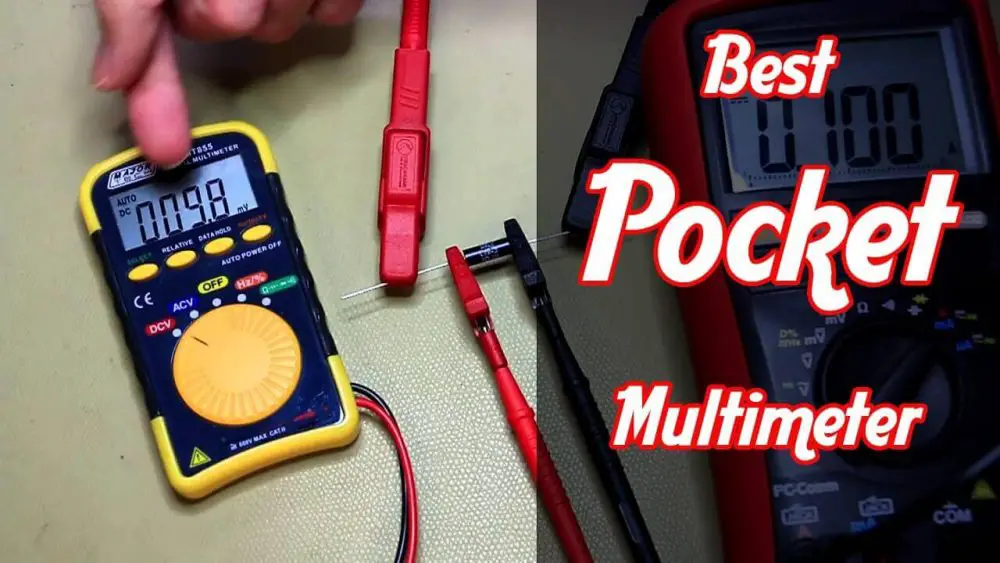Table of Contents
How to use a Multimeter to Test a Voltage
A multimeter is a small device that works for electrical measurements and electricians. Calculating the voltage is very common around the globe. Whether you are a professional or beginner, some standard steps are required to follow. Therefore, we are discussing how to use a multimeter to test a voltage.
Testing voltage with this unit is not difficult but quite tricky. Voltage calculation is a very handy process. No doubt, multiple devices are available to measure the voltage. But, we would discuss only calculation with a multimeter.
We are discussing this device here because it is too famous among professionals. Before exploring more, we would talk about some basic parts.
Components Of A Multimeter
A multimeter is not too versatile in construction. Every type comes with elements that are common among all. The most prominent components are;
Display
The display comes with multiple digits. The LCD screen is wider and very easy to read for every user.
Rotating range knob
With this component, you can select the multimeter job by simply turning the switch. You can adjust the range of the multimeter is equipped with an auto-ranging system.
Probe terminals
Every multimeter is bundled with two to four probe terminals. The diameter of this probe is 4mm. Equally wide probes get fit in this part.
Probes
Multiple probes come with every multimeter. The tip is pointed, which is the point of attachment. The opposite part is adorned with a plug for insertion.

Voltage measurement
Follow these steps for successful voltage detection;
- Turn the device of whose voltage is required to measure. In this way, there would be no chances of shorting the circuit.
- In the very next step, you need to plug the black probe into the COM terminal. It would be integrated at the lowest zone of a multimeter.
- Next, you can attach a red probe (+ve) to the respective terminal. The relevant terminal is tagged with “V” or “omega.” Some brands print diode symbols near this terminal.
- At this point, the steps are different for manual and auto-ranging, both. For a manual multimeter, turn the dial to AC and DC volts. After this, you can select the range to offer you accuracy. For the auto-ranging system, you are required to switch the dial to the V setting that comes with AC and DC symbols.
- Make sure to connect the meter in parallel series in the circuit. This step is necessary for measuring the voltage. Alternatively speaking, both black and red probes should be arranged parallel to the source of voltage or the component whose voltage value is needed to measure.
- In the next step, join the black probe to the initial point of wiring. You are needed to turn the unit on after this step.
- Joint the red probe to the opposite facet of the testing unit. There must be an equal and constant gap between the testing point and wiring.
- As the last step, you can check the readings LCD screen.
Voltage measurement safety
Before taking the measurements of voltage with a multimeter, some precautionary features are necessary.
- Check carefully that the test leads are not damaged. The conductor should not be exposed for secure usage.
- The test leads must be joined to the terminals of voltage and common. Don’t mix it with the current terminal.
- The range dial should be set with the highest and AC volts.
- While checking the voltage on the socket, double-check the socket should be power off. After that, you can securely put the relevant probe into the socket. Alternatively, with zero switches in the socket, the best practice is to put the neutral pin in the relevant socket. After that, you can put the probe in the live pin to check voltage.
- Reversing this step would simply destruct the unit.
- For probes that are adorned with crocodile clips, let you make the connection when the power is off. You have no need to keep the probe in place when the power switch is on.
- To check the main voltage, pick the multimeter that comes with a CAT rating of at least III or IV. Therefore, there would be great protection for the fuse and other internal parts. The less protected multimeter has a big trend towards blowing up. As a result, the internal components may get affected.
Frequently Asked Questions:
Fluke, Amprobe, INNOVA, Klein Tools, Mastech, and AstroAl are some famous names that are producing multimeters.
Zero continuity means that circuit is perfect. There would be perfect continuity in wire, fuse, or battery in the presence of zero ohms. It is considered a good reading for continuity.
DC is five-folds less dangerous than AC. The frequency range is such to leave a bad effect on the human body.
Final words
We have done an in-depth discussion on how to use a multimeter to test a voltage. In addition to basic steps for voltage calculation, we have discussed multimeter parts and precautionary measures. Our finding says that finding the voltage with a multimeter is not difficult. You have to be vigilant and careful about security and accuracy. Some steps are required to follow for preventive measures.
Every type of multimeter comes with the capacity of voltage measurement. This is so; voltage comes in a fundamental measurement. Other basic features include current and resistance, and some multimeters come with advanced features. These include frequency, capacitance, continuity, and more.
Auto-ranging and manual multimeters need steps that are a little bit different. While joining the probes with the terminal, attach black first and then red. Avoid reversing this procedure for successful measurement.
Related Posts:
How to test capacitor with the multimeter in circuit





